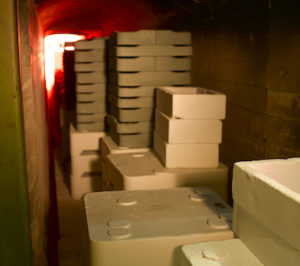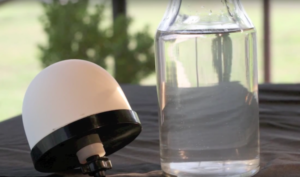Ceramics and glass are used in many industrial applications to support manufacturing within sectors such as metallurgical, chemical, mechanical, and energy production.
Properties that make these materials desirable in these fields are primarily wear and corrosion resistance, hardness, resistance to chemical attack, thermal and electrical insulation, and high-temperature resistance and compressive strength.
The largest category of products is represented by refractories. By definition, refractories are materials that are capable of withstanding operating conditions of 1,000°C or greater. Although approximately 80% of the refractory market is accounted for by the metallurgical sector (for processing of both ferrous and non-ferrous metals), these products also find application in other industries such as glass, ceramics and cement manufacturing, as well as in power generation.
In the iron and steel industry, refractories are used as linings for metal melting furnaces, for the ladles that hold, transport, and pour the molten metal, and for the pipes that carry away hot gases. Other items needed to handle the molten metals, such as hooks and sleeves, are also made of refractory materials. In other industries, refractories are mainly employed to build kilns, furnaces, kiln furniture, and vessels for material processing (e.g., sintering, melting, crystallization, and high-temperature chemical reactions).
Refractories are typically classified according to three main product types: bricks and stackable shapes, which include bricks (standard or unconventional shapes), blocks, tiles, cylinders, and other articles that are typically clay-based; monoliths, which are unshaped products formed on site; and other shapes such as precast liners, crucibles, ladles, valves, nozzles, diffusers, boards, and fibers.
Catalysts and catalyst carriers (i.e., substrates and media that support the catalyst) represent another relevant group of ceramic products for industrial applications. They are primarily used in petroleum refining and chemical processing for manufacturing fuels, polymers, bulk chemicals, and pharmaceuticals that would not be possible otherwise, as well as for reducing environmental pollution.
Ceramics are also important for filtration and separation processes. Products consist of membranes, macrofiltration media, and filters, the difference among the three being that membranes have very small pore sizes (below 10 microns); macrofiltration media have pore sizes between 10 microns and 1,000 microns; and filters have larger openings. Membranes are often made from ceramic nanofibers. Ceramic separation media are less common and more expensive than polymeric media, but are favored for the treatment of high temperature and/or corrosive fluids. They also offer the advantage of being less affected by fouling and can be more easily regenerated with steam and heat treatments. The higher initial cost is compensated by a longer lifetime and reduced downtime.
Many wear and corrosion resistant parts and coatings find application in manufacturing. They include products such as ceramic cutting tools, bearings, pump seals, nozzles, valves, and thread guides for the textile sector. The chemical and petrochemical industry relies on ceramic matrix composites for the fabrication of pipes, pumps for abrasive fluids, and liners for gasifying systems.
Abrasive ceramics are common for polishing, grinding, and finishing operations and to manufacture parts with very tight tolerances. They are sold as powders, grains, beads, and wheels.
In addition, ceramics are used in industrial applications including thermal barrier coatings and thermal insulating textiles, and electrical insulators for machinery components and sensors.
The main use of glass is as panels and lenses for protective equipment (e.g., machinery covers and eyeglasses), instrumentation, and manufacturing equipment, such as inspection systems.
The main applications of ceramics and glass in manufacturing are illustrated in the table below.
Main applications of ceramics and glass in industry
| Where? | What? | Examples |
|---|---|---|
| CERAMICS | ||
| High-temperature processing | Refractory products | 1  |
| Chemical and petrochemical processing | Catalysts and catalyst carriers | |
| Pipes and other parts for fluid processing | 2  |
|
| Filtration and separation | Filtration and separation media | 3  |
| Mechanical applications | Cutting tools | 4  |
| Abrasives | 5  |
|
| Bearings, nozzles and valves | 6  |
|
| GLASS | ||
| Machinery and instrumentation | Glass for manufacturing equipment and instrumentation (for example, sight glass) | 7  |
Image credits: 1. iStock; 2. Allen Yang, YouTube; 3. Monolithic Dome Institute, YouTube; 4. doubleboost, YouTube; 5. WurthAus, YouTube; 6. Yuki Bearing, YouTube; 7. Jason Woodhead, Flickr
Join The American Ceramic Society
Become an ACerS member and enjoy the additional benefits of belonging to a global community of ceramic and glass scientists, researchers, materials scientists, professors, students, and manufacturers.

